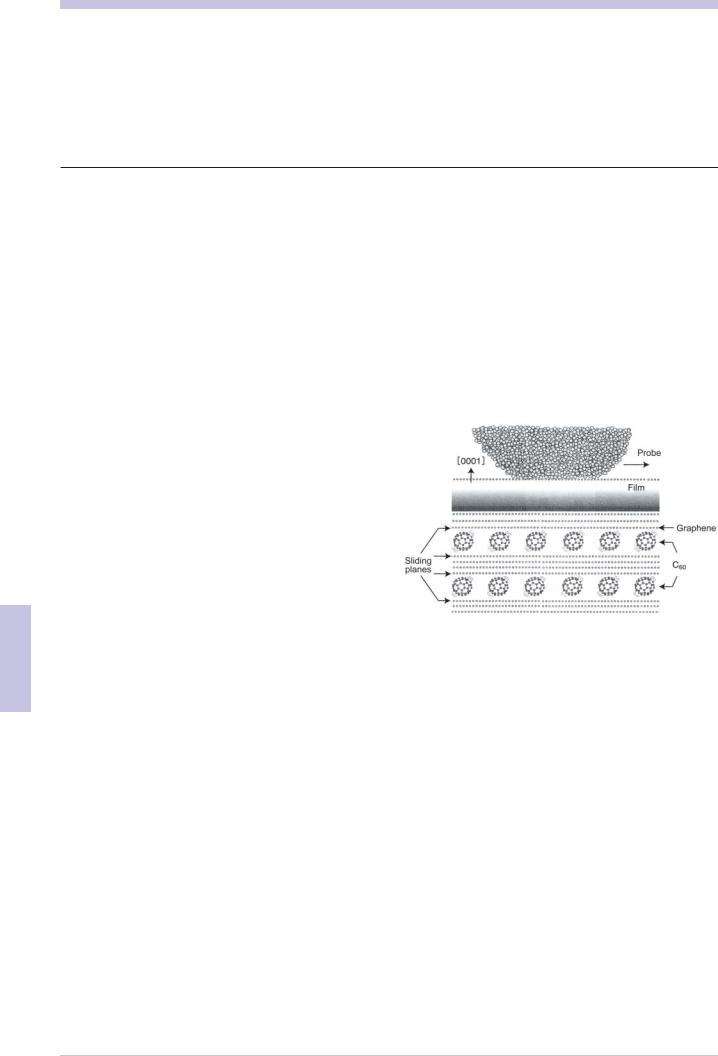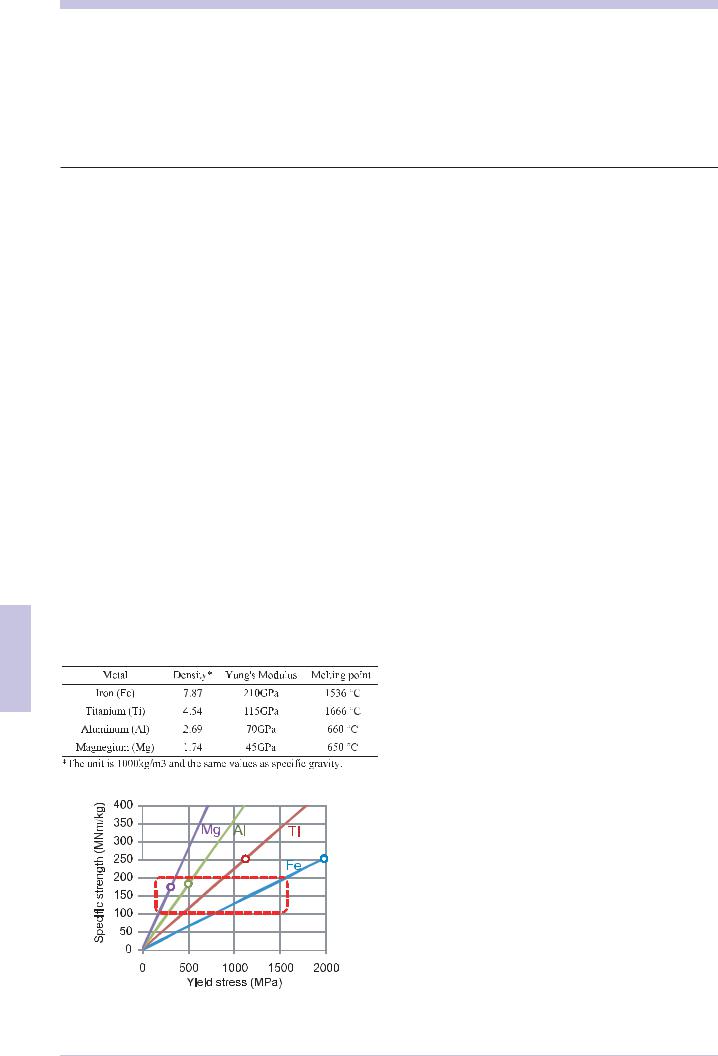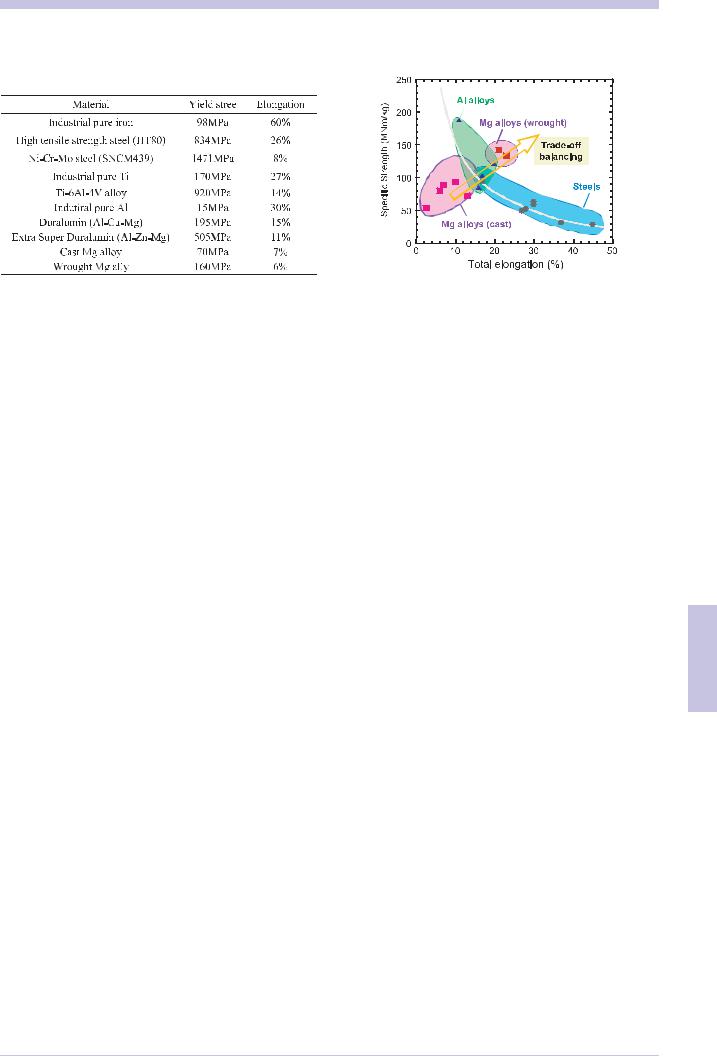
- •Preface
- •Chapter 1
- •Chapter 2
- •2.1 Domestic Trends
- •2.2 International Trends
- •Chapter 3
- •3.1 Overview
- •3.2 Solar Cell Materials
- •3.3 LED Materials
- •3.4 Materials for Electronic Products
- •3.5 Thermo-Electric Conversion Materials
- •Chapter 4
- •4.1 Overview
- •4.2 Materials for Hydrogen Production and Storage
- •4.3 Photocatalytic Materials
- •4.4 Fuel Cell Materials
- •4.5 Secondary Cell Materials
- •4.6 Corrosion-Resistant Materials
- •Chapter 5
- •5.1 Overview
- •5.2 High Temperature Materials for Gas Turbine Power Generation
- •5.3 Ultra Supercritical Coal-Fired Power Generation Materials
- •5.4 Fusion/Fission Power Generation Materials
- •Chapter 6
- •6.1 Overview
- •6.2 Superconducting Materials
- •6.3 Magnetic Refrigerants
- •6.4 Permanent Magnetic Materials
- •6.5 Mechanical Response Materials
- •6.6 Low-Friction Materials
- •6.7 Light structural materials
- •6.8 High Temperature Materials for Aeroengines
- •Chapter 7
- •7.1 Overview
- •7.2 Atomic Switch Materials
- •7.3 Nanoscale Materials
- •7.4 Nanoassembly Materials
- •7.5 Nanostructure Control Materials
- •Chapter 8
- •8.1 Overview
- •8.2 Adsorbent Materials
- •8.3 Separation Membrane Materials
- •8.4 Exhaust Gas Catalyst Materials
- •8.5 Nature Tech Materials
- •9.1 Overview
- •9.2 Crack Growth and Life Assessment Techniques
- •9.3 Assessment of Fatigue and Life Assessment Techniques
- •9.4 Assessment of Creep and Life Prediction Techniques
- •9.6 Methods to Evaluate Degradation and Damage

Chapter 6
6.6 Low-Friction Materials
Kun’ichi Miyazawa
Fullerene Engineering Group, Advanced Nano Materials Laboratory, National Institute for Materials Science
1. Introduction
Friction is an important phenomenon, closely involved in everyday life, and technologies to use strong friction, or conversely, to reduce friction as far as possible, have been researched since ancient times. When the flat upper surface of body A and the flat lower surface of body B are in contact, and A is anchored and B is made to slide, a force acts to resist the movement. That is the force of friction. At that stage, the ratio between frictional force F generated on the contact surface and the force N pressing body B onto body A is the coefficient of friction , which completes the formula below.
F = N |
(1) |
If can be made smaller, the energy lost to friction is reduced, so the development of materials which achieve low friction, which are highly lubricant materials, is essential for energy saving. But is there such a thing as low-friction materials with such extremely small values that the energy lost to friction drops to almost zero?
C60, which is a molecule consisting only of carbon atoms, and a type of Fullerene, has a spherically symmetrical form with a diameter of 0.72nm. C60 forms molecular crystals coupled by weak van der Waals forces, but the C60 molecule itself is very hard and has an extremely high bulk modulus of 717GPa, far surpassing that of diamond 1). The density of C60 crystals is approximately 1.7g/cm3, which is very light, being1/4 that of iron, 7.9g/cm3. The coefficient of friction of thin coatings of C60 formed by the sublimation method is in the range 0.08~0.18, which is as low as molybdenum disulfide or graphite coatings 2). For that reason, C60 is expected to serve as the ultimate ball bearing. This paper describes how C60 could be used in the field of friction and abrasion.
2. Research trend
2.1 C60 intercalated graphite
Miura et al. have reported, as described below, that C60 intercalate graphite has a coefficient of friction close to zero 3). When a block of graphite is agitated in a mixture of nitric and sulfuric acids, then washed with pure water, and then heated in a kiln at 1050 °C for a short period, the distance between graphite layers can be increased by a factor of tens. This expanded graphite and C60 powder are vacuum sealed into a silica tube and heated in a kiln at 600 °C for 15 days. The result is graphite with C60 between the layers, which is C60 intercalated graphite. In this compound,
layers of single C60 atoms alternate with graphite layers, stacked with a pitch of 1.3nm between layers.
When C60 intercalated graphite film produced by that process was analyzed using a friction microscope, the frictional force, which is the horizontal force, was observed to be almost zero under an applied load of up to 100nN. Figure 6.6.1 illustrates a friction measurement test on C60 intercalated graphite film using a friction microscope probe.
C60 intercalated graphite has the potential to greatly reduce frictional energy losses from previous levels, so it can be expected to make a great contribution to solving energy problems as applications are developed.
Fig. 6.6.1 Structural model of C60 intercalated graphite film, in which single layers of C60 with a dense structure exist within a graphite film, with a 1 nm pitch between layers (reproduced with permission from the author of reference 3).
2.2 Micro-rails of fullerenes
One of the key points of the C60 intercalate graphite described above is that it is highly fluid, due to the rolling and shaking of the spherical C60 molecules. The C60 inside C60 nanowhiskers (C60NW), which are one kind of fullerene nanowhisker (FNW), is normally loosely coupled by van der Waals forces, provided it is not treated with UV light or electron beam. 4, 5) C60NW has a lattice constant of the same size as face-centered cubic crystals of C60 at normal temperature and pressure, so individual C60 molecules are able to roll freely. C60NWs are single crystalline semiconductor nanofibers and between the orders of micrometers and millimeters in length. Their diameter is a constant (approximately 100~1,000nm) along the axis of growth.
Figure 6.6.2 shows a C60NW (diameter 526nm) that would normally be straight, bent with a radius of curvature of 29 m. The surface of C60NW is flat, on a molecular scale, and the superior lubricant properties of C60 suggests that C60NW could be used as
54
Materials Outlook for Energy and Environment

Fig. 6.6.2 Image of scanning electron microscopy of a bent C60NW
a sliding material with low coefficient of friction.
C60NW can be bent with a small radius of curvature and has a uniform diameter, so it could be used to form low-friction microrails in MEMS (micro electro-mechanical systems) devices.
2.3 Lubricant functions of C60
In early research, Hisakado et al. have reported that alcohol with a 1% addition of C60 powder provides superior effects against friction and abrasion of ceramics such as AL2O3, SiC and TiC 6).
The surfaces of gears, ball bearings, other bearings and similar components are coated with mineral oil for lubrication. Attempts are under way to improve the performance of mineral oil by adding fine powder of C60, with 10nm average diameter 7). Lee et al. have performed friction experiments with an addition of 0.01~0.5vol% of C60 to mineral oil. Results indicate that the coefficient of friction of oil with C60 added is smaller than that of oil without C60. Experiments using disk-on-disk frictional wear testing equipment indicated that increasing the amount of added C60 progressively reduced the amount of friction.
3. Summary
The above demonstrates that fullerenes are a superior lubricant. As fullerenes are expensive, development of applications is expected to proceed in fields such as machine oil additives, in which the addition of a small amount can yield major improvements in lubricant properties, and solid lubricants for microdevices.
References
1)S. J. Woo et al.: Phys. Lett. A 162 (1992) 501.
2)S. Hironaka: Tribologist 41 (1996) 772.
3)K. Miura, S. Sasaki: Nanocarbon Handbook, NTS (2007) 680.
4)K. Miyazawa et al.: J. Mater. Res. 17 (2002) 83.
5)M. Tachibana et al.: Chem. Phys. Lett. 374 (2003) 279.
6)T. Hisakado et al.: Tribol. Int. 32 (1999) 413.
7)J. Lee et al.: Tribol. Lett. 28 (2007) 203.
Chapter 6
55
Chapter 6. Materials for Energy Transmission and Conversion

Chapter 6
6.7 Light structural materials
Kaneaki Tsuzaki
Structural Metals Center, National Institute for Materials Science
1. Basics of the materials
The basic characteristic of structural materials is to have the ability to support a large load safely. The resistance against to plastic deformation is the yield stress, and that towards fracture is the tensile strength. As the yield stress and the tensile strength increase, a load that a material can support increases. The unit for yield stress and tensile strength is Pa=N/m2, force per unit area. Therefore, if materials show a constant yield stress, the weight of the material parts that support a given load can be decreased when the density of a material is small. This index is referred as specific strength = yield stress/density.
Steel is the most highly used material among structural metallic materials. Metallic materials that have a lower density than this steel are generally called light metals or light structural materials. Table 6.7.1 1) shows that magnesium has the lowest density among the structural metallic materials and is one fourth that of steel. The density and the elastic modulus are properties that only depend on the chemical composition; however, the yield stress and the tensile strength are a structural sensitive property, they depend on the metallic crystal structure and the microstructure in addition to the chemical composition. Microstructure control can increase the yield stress of steel to exceed 800 MPa and has led to the development of high tensile steels with a specific strength of
Table 6.7.1 Physical properties of structural metals.1)
Fig. 6.7.1 relationship between yield stress and specific strength. Circles indicate the maximum values developed in industry.
over 100MNm/kg. Table 6.7.1 shows the relationship between the yield stress and the specific strength of metallic materials. In this paper, we describe the trend of light structural materials including steels with a specific strength of over 100MNm/kg.
2.Environmental issue and light structural materials
The dominant contribution of light structural materials towards environmental issue in Japan is the reduction of carbon dioxide by the improvement of fuel consumption of vehicles. For example, a 10% reduction in the weight of an automobile improves the fuel consumption by 5%. The weight of the new model automobiles that are successively being put on the market, however, will gradually increase unless efforts are taken to decrease their weights. The reason is that improvements in collision safety and the rigidity of the vehicle are made along with the development of each new automobile model, and reinforcements are added to strengthen the vehicle and to improve the function of absorption and the dispersion of the impact energy on collision.
When Kyoto protocol was issued in 1997, the Japan Automobile Manufacturers Association, Inc. (JAMA) made a commitment to a carbon dioxide emission of 120g/km for a 1 km mileage in 2012. Therefore, in addition to an improvement in engine efficiency, a reduction in the weight of the vehicle becomes an essential problem for reducing the amount of carbon dioxide emission.
The April 4, 2008 edition of various newspapers reported the domestic new automobile model sales ranking. Honda “Fit” regained its top position in all the categories with the exception of light weight vehicles by a margin of 879 cars over Toyota “Corolla”. Excluding light weight vehicles and hybrid cars, the New Fit was reported to have the lowest fuel consumption (24km/L). Since the carbon dioxide emission per 1L of gasoline is 2.31kg, with this fuel consumption, the carbon dioxide emission per 1 km mileage is 96g/km and achieves the JAMA’s target for 2012 (120g/km for a 1 km mileage). The expanding application of light structural materials markedly contributed to the fuel consumption improvement of this automobile.
3. Research trends for materials development
Specific strength must be increased to decrease the total weight of the materials used. The mechanical characteristics of various metallic materials appear on page 382 of the 2008 edition of the Chronological Scientific Tables (Maruzen), a literature that can
56
Materials Outlook for Energy and Environment

Table 6.7.2 Mechanical properties of structural metals.
be cited easily in Japan. Table 6.7.2 shows an excerpt. The materials on this list include steels with a yield stress of over 1400 MPa and aluminum (A7075) of over 500 MPa. In terms of specific strength, they exceed 150 MNm/kg and can be classified as a light material that is 10 times lighter than industrial pure iron of a specific strength of 12 MNm/kg.
3.1 Improvements of formability
Numerous material related problems arise when we intend to reduce the weight of the vehicle by employing the high specific strength materials, light materials. The first problem is of course the cost. Titanium alloys are typical light materials with superior characteristics, but seldom to be applied in vehicles because of its high cost. Even in the aircraft field, expensive titanium alloys are employed mainly to military planes. The second problem is deterioration of formability. As shown in table 6.7.2, the elongation decreases as the yield stress increases. Elongation is measured by dividing the increase in the sample length till a material fractures using the tensile test by its initial length. With larger elongation, a material can take on various additional forms by plastic deformation. In general there is a trade-off relationship that as the specific strength or yield stress increases, the elongation decreases. Many automobile parts are produced by employing a plastic deformation called press forming; therefore, increasing the elongation is being demanded despite its high strength.(Fig. 6.7.2) This is a challenging issue to be overcome. Microstructure control using nanotechnology is being carried out for this type of scientific encounter. For the processing of high strength materials, many other problems remain in such areas as machinability and weldability.
3.2 Reduction of rare metals
Microstructure control through phase transformations is one of promising ways to improve mechanical properties of metallic materials. The phenomena of phase transformations are largely influenced by alloy elements; therefore, alloying has been a major pillar in the development of metallic materials. Small amounts of rare metals such as niobium (Nb) and molybdenum (Mo) have been commonly added to steels to obtain the microstructures that increase the strength with a sufficient elongation. Now, a more
Fig.6.7.2 relationship between total elongation and specific strength.
sophisticated microstructure control without using these rare metals is being demanded because of resource rack of these metals.
In addition to the improvement in fuel consumption in automobiles, light metallic materials with high strength and elongation are always needed to improve safety in transportation, enhance architectural flexibility in construction, and improve performance in heavy machinery.
References
1)“Chronological Scientific Tables, 2008 edition”, Maruzen, Tokyo, (2007); Density in P.371, Young’s modulus in P.379, and Melting point in P.395.
2)“Chronological Scientific Tables, 2008 edition”, Maruzen, Tokyo, (2007); Mechanical properties in pp. 382-383.
For further reading
1)Special Issue on “R&D strategy for structural materials”, Materea, Japan Institute for Metals, vol.43, No.5 (2004), pp.384-410.
2)Special Issue on “Materials and technology for automobiles”, Materea, Japan Institute for Metals, vol.43, No.10 (2004), pp.799-829.
3)“Development technologies of lightweight materials for automobiles”, Ed. By Hiroshi Fukutomi, CMC Publishing Co., Ltd., Tokyo (2006).
Chapter 6
57
Chapter 6. Materials for Energy Transmission and Conversion
